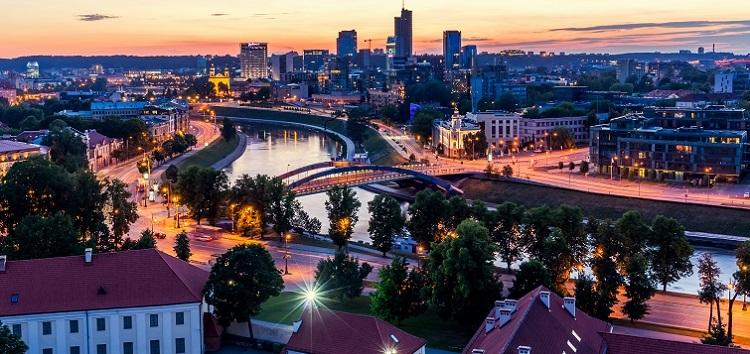- EBRD invested €358 million in the Baltic states in 2022, a new record
- High figures driven by record €208 million annual investment in Lithuania
- Investments supported development of capital markets and energy security in the region affected by the war on Ukraine
The European Bank for Reconstruction and Development (EBRD) invested a record €358 million in the Baltic states in 2022. The high figures were driven by a record-breaking €208 million invested in 11 projects in Lithuania – the highest ever annual investment in the country.
In Latvia the Bank invested €76 million in 2022, slightly down on the previous year’s figure of €113 million. In Estonia the Bank invested €74 million, an increase on the €56 million invested in 2021. This was crucial financial support for these economies that have been impacted by the highest inflation rates in Europe, as well as energy shocks and reduced investor appetite as a result of Russia’s war on Ukraine.
The previous investment record for the region was in 2021 when the Bank invested €294 million as it sought to support the recovery of the Baltic economies from the global coronavirus pandemic.
The Baltic region, with its historical ties and geographical proximity to both Ukraine and Russia, faced a turbulent year, as it weaned itself off Russian gas, grappled with sky-high inflation, and welcomed refugees and relocated peoples from Ukraine and Belarus. As a result, the region’s capital markets experienced heightened market volatility.
The EBRD’s Head of the Baltic States, Tomas Kairys, said: “The geopolitical and economic turbulence caused by Russia’s war on Ukraine significantly impacted the Baltic states, causing reduced investor appetite in the region. We are therefore proud to have been able to step up our investments in sectors where support was most needed. Our record figures show our commitment and strong belief in the economies and capital markets of Lithuania, Latvia and Estonia.”
Among the highlights of the EBRD’s activity last year is its €72 million investment in the bond issue of the regional food retailer Maxima Grupe, supporting the retailer’s access to funding from capital markets at times of uncertainty. As part of the investment, Maxima Grupe developed and improved its workforce management policies, including those on employing Ukrainian refugees through re-skilling programmes and integration support. Maxima Grupė committed to hiring 720 refugees, the overwhelming majority of whom are women.
The Bank also made headway in its efforts to deepen and diversify debt and equity capital markets in the region. More than half – or €193 million – of the EBRD’s total investments in the three economies were in the financial institutions sector.
In Lithuania the Bank invested €21 million in senior preferred bonds placed by Siauliu Bankas, supporting the resilience and regulatory compliance of a systemically important institution in Lithuania. The Bank’s investment bridged the existing funding gap and helped to ensure regulatory compliance with Minimum Requirement for Own Funds and Eligible Liabilities (MREL) requirements.
The Bank also continued supporting the first ever issuance of covered bonds in the Baltic countries – it invested €97 million in a series of covered bonds by Luminor Bank, which supported the establishment of a new capital markets instrument and strengthened the development of regional capital markets. Lithuania has been allocated €32 million of the bond issuance.
Acting as an anchor investor, the Bank invested €22.5 million in a sustainability-linked bond by Lithuania’s state-owned energy transmission system and exchange group EPSO-G. This was the first such bond issued by a Baltic company, and the EBRD’s investment contributed to the development of the local debt capital market, which has suffered from lack of investible securities and poor secondary market liquidity. The successful placement of the bond has allowed EPSO-G to both diversify its funding base and continue investing in electricity grid synchronisation with continental Europe, safeguarding Lithuania’s energy supply.
Similarly, in Latvia, the Bank’s €20 million subscription to Latvenergo’s green bond issuance has enabled the power utility to finance improvements to the country’s electricity network. The investment also contributed to the development of Latvia’s capital market, which has struggled with a lack of investible securities and poor secondary market liquidity.
In Estonia, highlights include a €15 million investment in senior preferred bonds issued by LHV Group, the largest domestically owned financial group in Estonia. The investment helped LHV Group to build up its loss absorption capacity in line with MREL regulations. It also supported better access to finance for small and medium-sized enterprises (SMEs) in Estonia, as LHV Group committed to using the EBRD proceeds to finance MSMEs and corporates in Estonia, which have been directly or indirectly affected by the economic consequences of the war on Ukraine.
To date the EBRD has invested more than €890 million through 105 projects in Estonia, more than €980 million through 100 projects in Latvia, and more than €1.3 billion through 117 projects in Lithuania.
Overall the Bank invested a record €13.1 billion in 2022, with 50 per cent in the green economy. More than 10 per cent – or €1.7 billion – was deployed in Ukraine.




